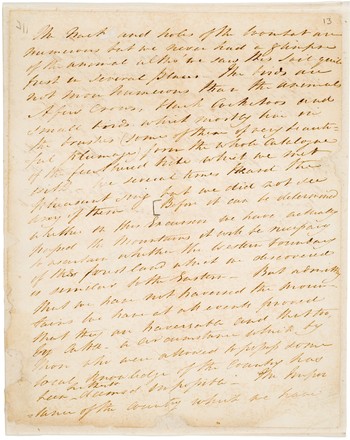
Journal of an expedition across the Blue Mountains
11 May - 6 June 1813
Safe 1/22a
Manuscript journal
Safe 1/22a
Manuscript journal
The Australian born explorer, politician, journalist and poet William Charles Wentworth was one of New South Wales’ most prominent colonists.
In 1813, Wentworth along with Gregory Blaxland and William Lawson lead an expedition that discovered a route across the ‘impassable’ Blue Mountains; as well as the plains beyond the mountains that promised rich pasturage and the future wealth of NSW.
Wentworth used his journal to give an account of the expedition, rather than as a diary containing daily entries. From this document, we know that Wentworth is concerned with soil quality, the availability of water and ultimately the potential for extensive tracts of good grazing land. He also touches on the ‘immense unconnected perpendicular masses of mountain’ that the explorers came across, as well as the ‘Natives’ and various marsupials and birds.


 Back to list
Back to list